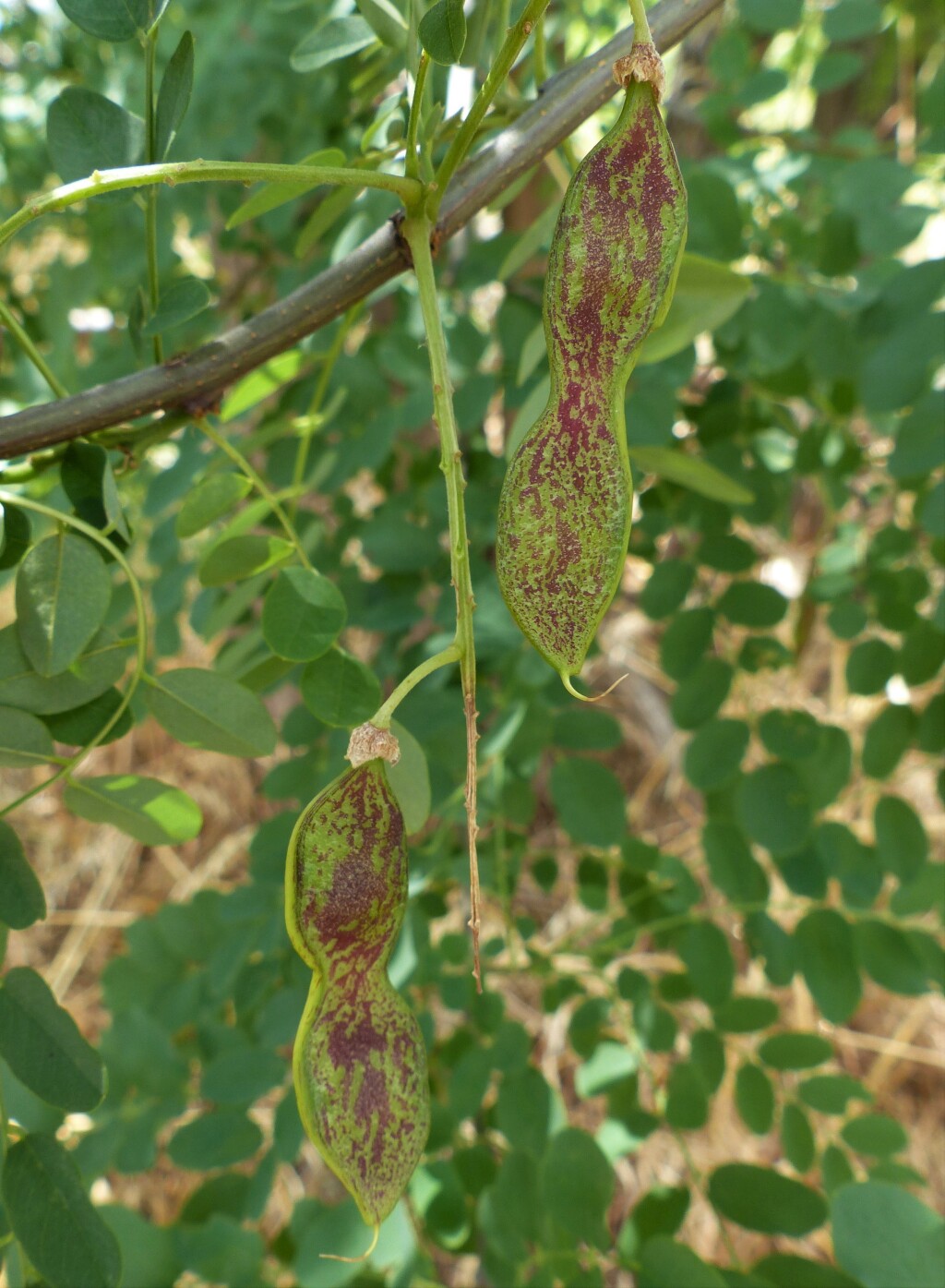Robinia
Deciduous trees or shrubs. Leaves alternate, imparipinnate, petiolate; leaflets 11–41, entire, usually opposite; stipellae present; stipules spiny. Inflorescences pendulous axillary racemes, pedunculate; flowers white, pink or lavender, pedicellate; bracts small, acuminate, membranous, early caducous; bracteoles absent or early caducous. Calyx campanulate, bilabiate, teeth 5, upper 2 shorter and partly connate, lower 3 subequal; standard suborbicular, reflexed, clawed; wings oblong-falcate, free, nearly as long as standard; keel incurved, obtuse, partly united below; stamens diadelphous, upper stamen free or partly connate, lower 9 connate by their filaments, anthers ovoid, uniform or alternately long and short; ovary stipitate, ovules many, style inflexed, bearded on inner side, stigma small, terminal. Pod linear, compressed, glabrous or hairy, sometimes narrow-winged along upper suture, continuous inside, dehiscent; seeds several to many.
About 20 species from temperate regions of North and Central America; 1 species naturalised in Australia.
Jeanes, J.A. (1996). Fabaceae. In: Walsh, N.G.; Entwisle, T.J., Flora of Victoria Vol. 3, Dicotyledons Winteraceae to Myrtaceae, pp. 663–829. Inkata Press, Melbourne.
 Spinning
Spinning


